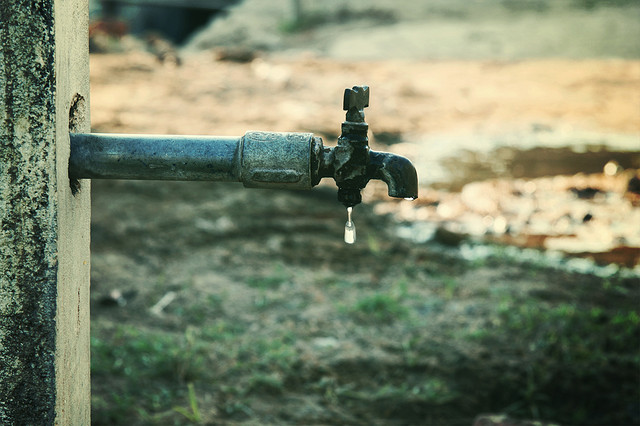Contrary to public belief, water is actually not very rare. The compound is made up of two of the most abundant elements in the universe: hydrogen and oxygen. Availability of water should not be a problem of civilization; our planet is 71% water. While about 97% of that water is saliferous, a significant 3% is fresh, and most importantly, renewable. It is the foundation of our society, our civilization, our history and our future. Water’s significance is immense; it drives our economies and, our political disputes.
Environmental degradation and water scarcity are seldom looked at as the catalysts of conflict. However, there are many prominent conflicts today that are fuelled over water and the pollution of fresh water sources. Understanding the workings of water conflicts and their connection to politics, or hydro-politics, is essential for getting a good grasp on issues of water security.
Generally, conflicts are the result of different political or cultural values and interests. Many of our conflicts relate to international boundaries and the effort to protect cultural values and political beliefs. Water, however, does not fall into that category. Instead it is a “fugitive resource” because arbitrary international borders do not bind it. Water flows freely and is accessible to anyone regardless of culture, ethnicity or political affiliation. Therefore, what happens when two parties with different interests must share a fresh water source? Often, conflict will erupt as they try to meet their different political or economic goals. This is most clearly evidenced by conflicts between environmental groups and businesses. Areas that suffer from water scarcity often face greater conflict; a few examples would include the Middle East, the Indian Subcontinent, Africa and even the former Soviet Union.
One of the most prominent political conflicts in the Middle East over water can be traced to the Jordan River. The Arab-Israeli conflict, often disguised by politics has a great deal to do with water. This conflict can be traced back to the late 1800s when the Zionists decided to establish a home for Jews in Palestine. Today, the Jordan basin shares its banks with several countries: Lebanon, Syria, Palestine, Jordan, and Israel. One of the largest outbreaks of violence that occurred between the Israelis and Palestinians was the Six-Days War in 1967, when water was used as a tool of conflict. The Jordan Valley Unified Water Plan was sponsored by the United States in an attempt to equally divide the resources among those sharing the Jordan River. In the 1960’s, however, the Arab League funded a water diversion project that would significantly decrease water flows into Israel. The result was what is known as the “War over Water.”
Additionally, Israel needed more water to develop and survive – as it dealt with a large influx of Jewish immigrants. This region is extremely arid and the demand for water puts a great deal of pressure on local aquifers to support the population. Palestinians continue to accuse Israel of taking more water than it needs, especially in terms of mountain aquifers, claiming that Israeli settlements take about 80% of the aquifer flows with only 20% left for Palestinians.
Peter Gleick, the President of the Pacific Institute a leading expert on water security, argues that the Syrian conflict also has its roots in water insecurity. In his study he claims that what triggered the uprising against Bashar al-Assad was a four-year drought, food shortages, and increased prices. These problems led to a mass migration of farmers who moved to cities with little opportunity of employment.
According to the United States State Department; “…during the next ten years, many countries important to the United States will experience water problems that will increase the risk of instability and state failure, exacerbate regional tensions, and distract them from working with the United States on important policy objectives.” Back in 2009, Iran was facing increased droughts and elevating salinity of their natural wetlands. Irregular irrigation practices threatened the nation’s ground water supply. At the time, Iranian water experts continued to urge the government to deal with this problem to ensure that their poor water practices would not destabilize the country. While Iran and the United States have had a strained relationship, scientists and policy advisors of both nations have consistently met to deal with water insecurity issues.
Water security is essential to the economy, security, and to government stability. Iran and the United States, while having a difficult relationship, have been able to cooperate on this significant issue, signifying that other countries can do the same. Water security is a universal dilemma and success or failure in the future depends on the commitment of all nations today.







